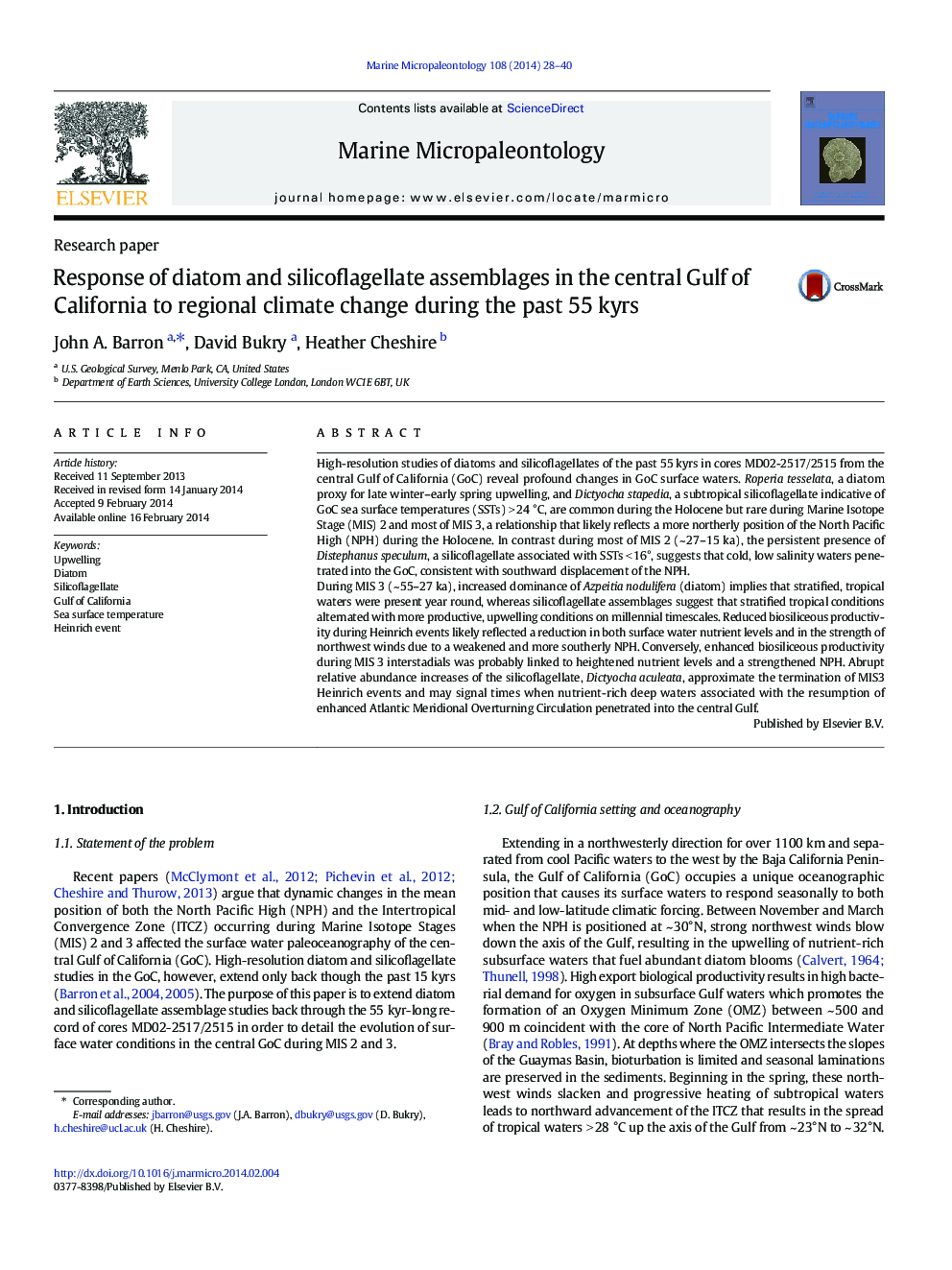| Article ID | Journal | Published Year | Pages | File Type |
|---|---|---|---|---|
| 4748843 | Marine Micropaleontology | 2014 | 13 Pages |
Abstract
During MIS 3 (~Â 55-27Â ka), increased dominance of Azpeitia nodulifera (diatom) implies that stratified, tropical waters were present year round, whereas silicoflagellate assemblages suggest that stratified tropical conditions alternated with more productive, upwelling conditions on millennial timescales. Reduced biosiliceous productivity during Heinrich events likely reflected a reduction in both surface water nutrient levels and in the strength of northwest winds due to a weakened and more southerly NPH. Conversely, enhanced biosiliceous productivity during MIS 3 interstadials was probably linked to heightened nutrient levels and a strengthened NPH. Abrupt relative abundance increases of the silicoflagellate, Dictyocha aculeata, approximate the termination of MIS3 Heinrich events and may signal times when nutrient-rich deep waters associated with the resumption of enhanced Atlantic Meridional Overturning Circulation penetrated into the central Gulf.
Related Topics
Physical Sciences and Engineering
Earth and Planetary Sciences
Palaeontology
Authors
John A. Barron, David Bukry, Heather Cheshire,
